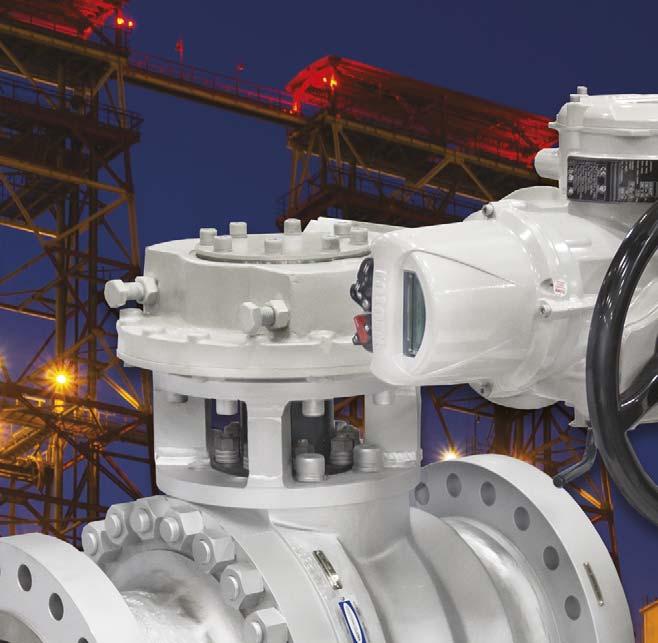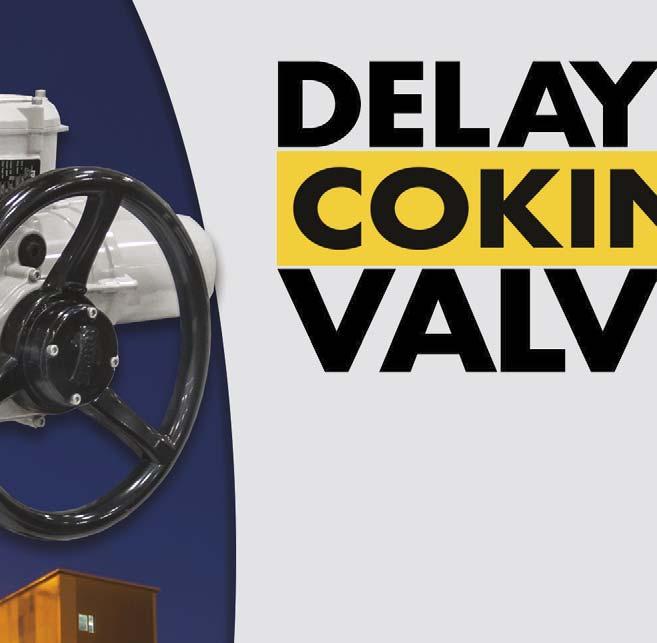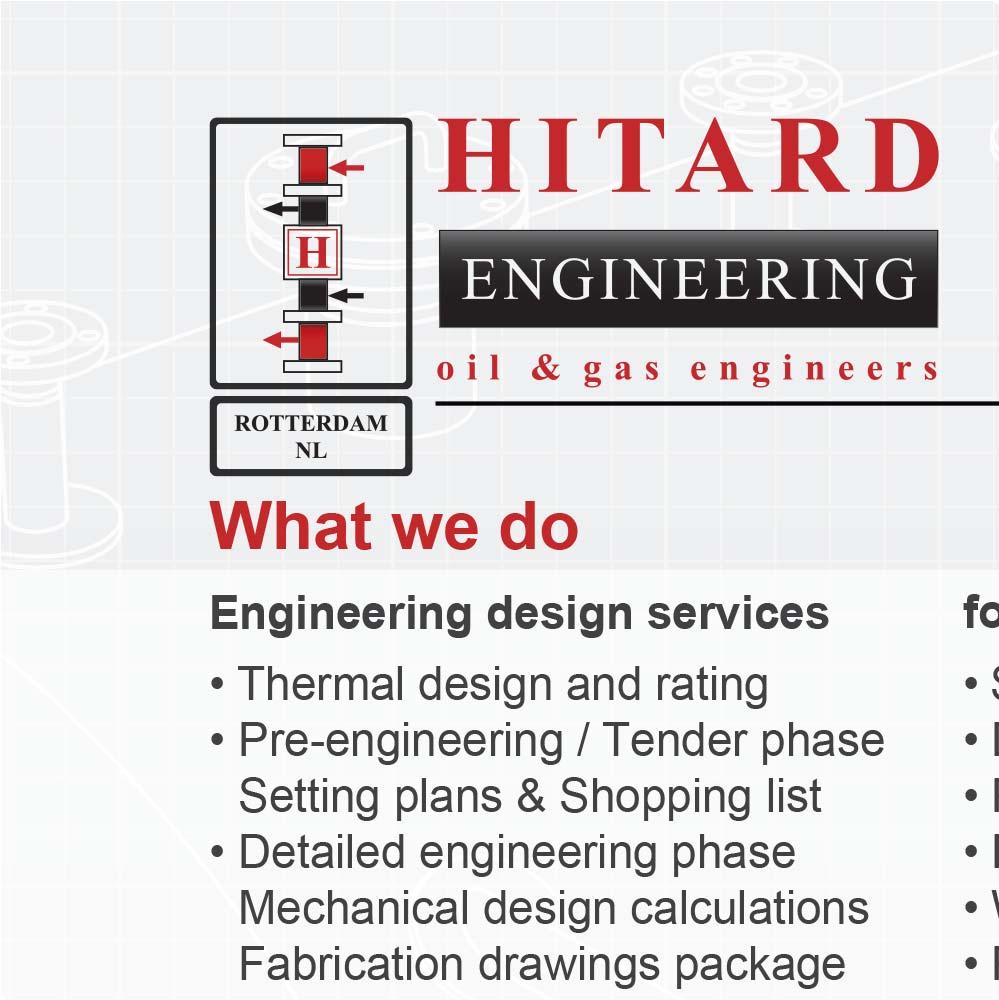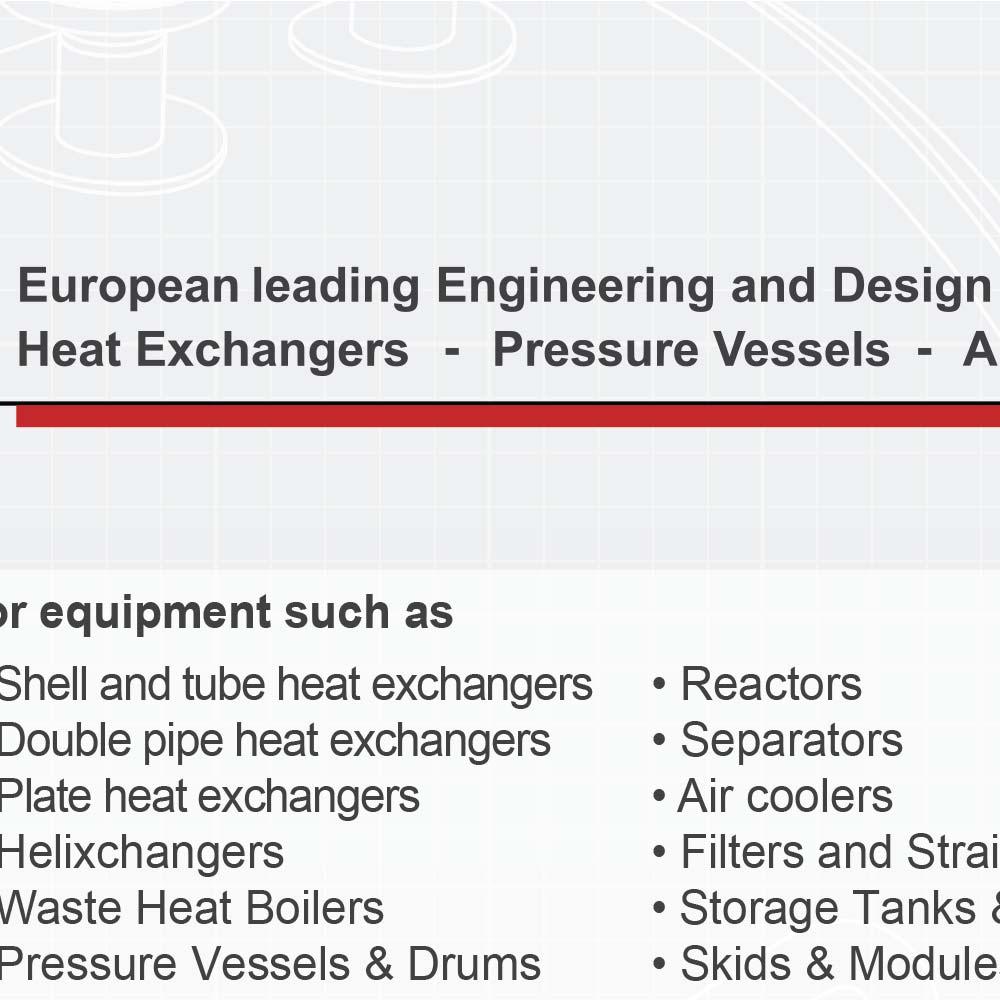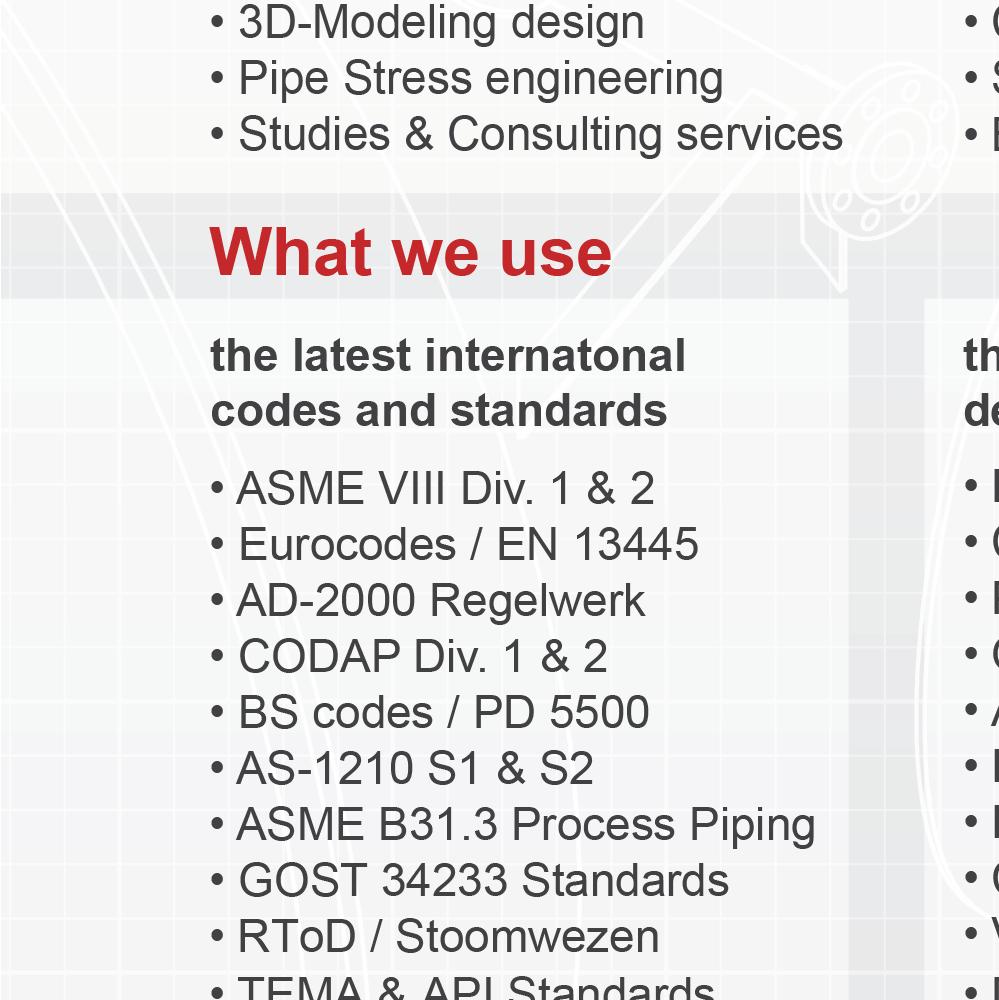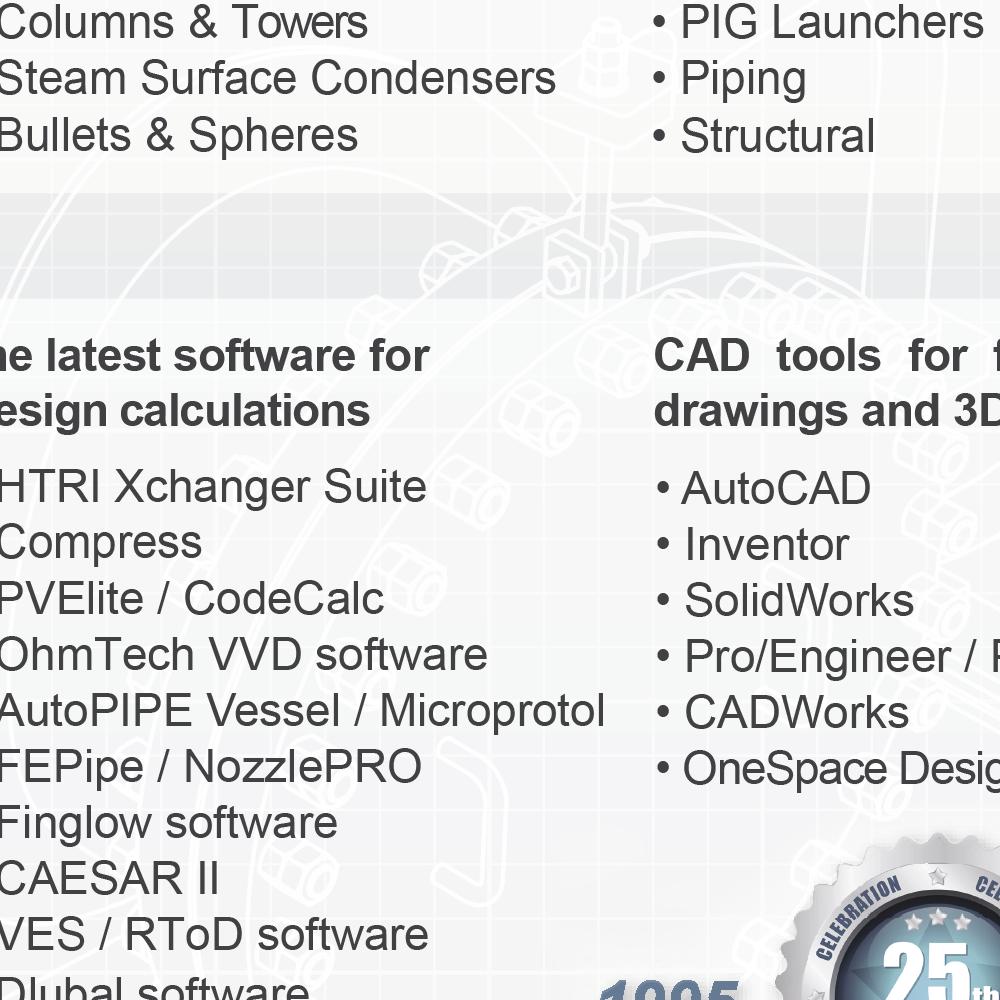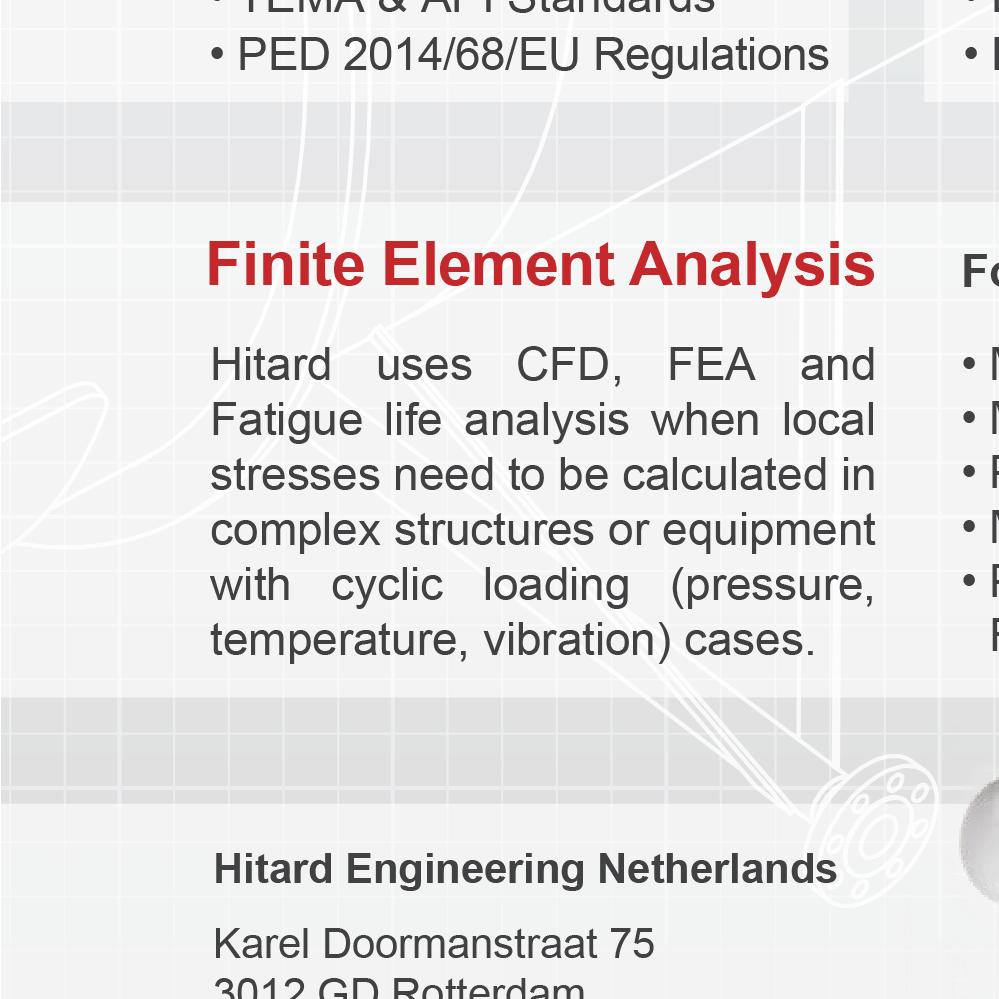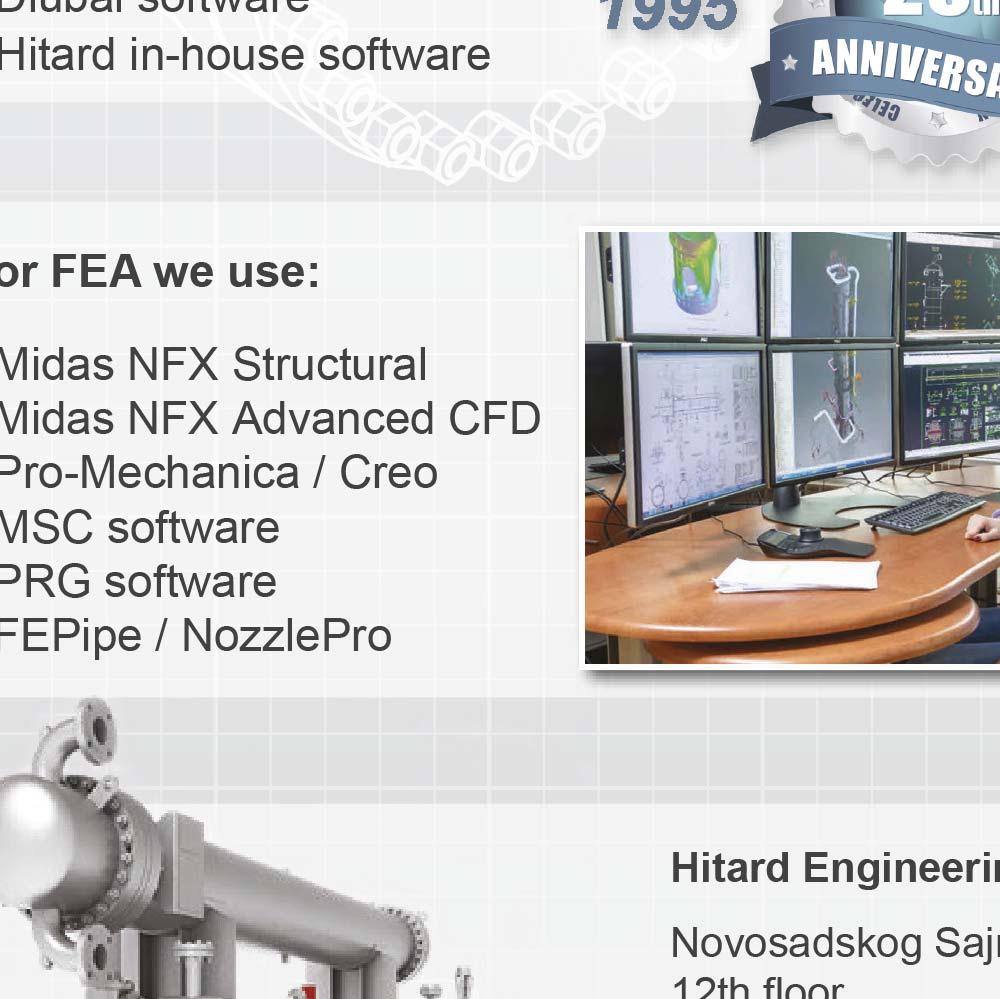
17 minute read
Pumps & Valves Q&A

Hydrocarbon Engineering talks to a number of leading experts in pumps & valves about technology innovations, environmental regulations, equipment reliability and safety, as well as the future of the sector following the COVID-19 pandemic.

Hani Fayed, President, CPC Pumps International

Hani Fayed is a Mechanical Engineer with 40+ years of experience in the pump industry spanning the globe, in various Sales and Senior Management roles. Hani’s career is focused on the API 610 pump market segment, most recently based at the CPC Pumps International Head Offi ce in Burlington, Ontario, Canada, where he currently serves as President.
A ball valve industry professional for 40 years, David has engineered API 6D, API 6A, and light industrial ball valves and actuators. Now with MOGAS for over a decade, he manages a collection of industry subject matter experts, application engineers and designers for direct technical support of MOGAS sales and service efforts worldwide. He provides guidance on codes and standards, sizing, materials and product recommendations for a wide variety of MOGAS applications. Prior to MOGAS, David held product management and chief engineering positions at Conbraco and TK Valve. David serves as the Vice Chair for MSS’ (Manufacturer’s Standardization Society for the Valves and Fittings Industry) Committee 410 Severe and Special Services Valves, as well as a member of the coordination committee for MSS. He holds a Bachelor of Science degree in Mechanical Engineering from Rose-Hulman Institute of Technology.
Scott Moreland, Vice President, Quadax Valves

Scott Moreland is the Vice President of Quadax Valves. With over 40 years of global valve experience, Scott is responsible for North America sales. Scott’s experience includes valves sales into all industries with a special focus on severe service applications including extreme conditions in LNG or high temperatures. He has a degree in business from Louisiana Tech University.

Thomas J. Conroy, President, Teikoku
Thomas J. (Tom) Conroy is the President of Teikoku USA Inc. and responsible for North and South American Business Development and Operations including manufacturing and service centres located in Warminster, Pennsylvania, Marietta, Ohio, and Houston, Texas, US. Mr Conroy has been involved in the application, sales, service, manufacturing and marketing of canned motor pumps for over 40 years, and has held various positions of increasing responsibility with Milton Roy Co., Crane Co. and several value-adding industrial distribution companies. As the General Manager of Crane Co.’s Chempump Division in 2003, Mr Conroy was integral in Teikoku USA’s acquisition of the Chempump Division and, since that time, has led Teikoku USA’s strategic planning, integration of Chempump Division operations, and consolidation of all enterprise administration activities. Mr Conroy is a past member of the Board of Directors of the Hydraulic Institute and holds a Six Sigma Green Belt certifi cation.
Mike Murphy, Industry Manager, Coking/Heavy Oils, ValvTechnologies

Mike Murphy has been with ValvTechnologies as the Industry Manager for Coking and Heavy Oils for almost 10 years and has been in sales and sales management for over 35 years. His background is in process industry maintenance with rotating equipment responsibilities. He is a trained engineer with a degree in manufacturing engineering, mechanical design.



Explain why pumps and/or valves are so crucial to downstream operations.
Hani Fayed, CPC Pumps: Pumps are the heartbeat of liquid handling and processing in general, and they are an even more important factor for the hydrocarbon processing industry. The liquids handled in these processes are at various levels of criticality to the process, and they generally present a challenging environment for many pumping applications, such as extremely high pressures and elevated temperatures. Pumps operating in these plants must operate reliably with extended mean time between repairs (MTBRs) while complying with all safety requirements associated with hazardous operations, including control of fugitive emissions. Just about every process used in the downstream side of hydrocarbon processing relies on pumps for its source of motive power.
David Ashwill, MOGAS Industries Inc.: Isolation valves are essential safety devices. They can be called on for tasks as complex as allowing the shutdown of entire systems in a controlled fashion, or in the case of an emergency. They handle tasks as simple as positively isolating a damaged or poorly performing piece of equipment to allow its safe repair, removal or replacement.
Mike Murphy, ValvTechnologies: Valves are essential to the successful operations of a plant. They are designed into piping systems to isolate certain sections of the process to continue production during planned and unplanned outages. Having zero-leakage valves, we see the value with both safety and business requirements.


What are the main applications of your company’s pumps and/or valves within the downstream (hydrocarbon processing) sector?
Hani Fayed, CPC Pumps: CPC Pumps designs and produces pumps in various confi gurations that have historically focused on applications in the downstream market segment. Our DNA and our experience base started from that focal point, and it then expanded over the decades to cover the other applications in the upstream and midstream market segments. Also, there are hundreds of various processes used in the downstream segment, and we participate in all of them.
David Ashwill, MOGAS Industries Inc.: MOGAS’ core application in the downstream hydrocarbon market remains the heavy oil refi ning sector. We recently extended our participation in the delayed coking sector but heavy oil remains our primary draw in refi ning.
Scott Moreland, Quadax Valves: From the Quadax perspective, our valves are primarily found in severe service applications being defi ned as either extreme cold or heat (-270°C /-100°C or +450°C/+800°C) where positive bubble tight shutoff is required long-term. Whenever a customer desires zero leakage in both fl ow directions, our products can be specifi cally engineered to meet their requirements.
Tom Conroy, Teikoku: Teikoku is engaged in the design and manufacture of dual containment, sealless canned motor pumps that apply user specifi ed elements of API 685 to fi nal designs for safe, emission-free circulation and transfer of volatile liquids produced in upstream cracking and reformer operations such as natural gas liquids, crude oil distillates, petrochemical feedstocks and biomass derivatives in renewable processes. Downstream products such as toluene, xylene, benzene, styrene, propylene, butadiene, ethylene, ammonia, methanol and their derivatives further downstream are all handled safely and reliably by canned motor pump technology.
Mike Murphy, ValvTechnologies: The primary function of many ValvTechnologies valves downstream is zero-leakage isolation. Most of our products are used in severe service applications in refi ning, gasifi cation, chemical, and renewables.





These severe isolation applications include delayed coking, fl uid catalytic cracking, ebullated and fi xed bed hydrocracking, treating, continuous catalyst regeneration, visbreaking, hydrogen, and other chemical recycling units.

How can pump and/or valve technology assist plants operating in extreme environments?
Scott Moreland, Quadax Valves: By combining precision engineering, the proper materials and design criteria, valves can be an invaluable asset in working with extreme environments. Critical service testing and long-term reference make the best case for use of severe service valves into specifi c applications.

Tom Conroy, Teikoku: Extreme ambient and extreme process conditions can be managed in engineered product designs and compliance to established regulatory norms associated with any process installation and operation. Whether the environment is hot, cold, subsurface or subject to potential gases, pumps and their drivers can be designed for such extremes. Control instrumentation and appropriate use of plant utilities work in tandem with pump designs to establish long-term reliable operation, steady productivity and ongoing compliance with regulatory standards. Pumps and valves can be designed for high working pressure and high temperature process conditions and, in the case of canned motor pumps, provide an extra level of redundant, controlled containment to eliminate risks associated with extreme condition operation.

Mike Murphy, ValvTechnologies: Extreme environments downstream have multiple characteristics that require specialised equipment, such as high temperatures, high temperatures with thermal cycling (large swings in temperatures), high pressure, and particulate-laden fl ow streams. These processes cannot continue without certain critical design elements of valves for harsh and extreme environments, including materials and proprietary manufacturing and design.
In particulate-laden fl ow streams or gases, extreme conditions are magnifi ed, i.e., a delayed coking unit with high temperatures, thermal cycling, and particulate requires particular process challenges to be addressed. As a severe service metal seated ball valves manufacturer, ValvTechnolgies provides specialised coatings, seating designs, material selection, body joint and packing designs, purging solutions, stringent testing criteria, and special modifi cations as needed.
How can pump and/or valve technology help companies meet the challenge of tightening environmental regulations?

David Ashwill, MOGAS Industries Inc.: MOGAS successfully completed third party fugitive emissions testing to ISO 15878-1 with a 6 in. Class 2500 valve testing at full rating pressures to ISO FE BH - C01 – SSA0 – t400°C (752°F). We believe this accomplishment may be unique to the ball valve industry for this test temperature, size and class. Testing was conducted with helium under these extreme temperatures and pressure, demonstrating the environmental integrity of the MOGAS valve offering.
Scott Moreland, Quadax Valves: By complying with the new industrial testing criteria that is ever evolving (e.g. API 641 and/or ISO 15848-1). A true business partner for a downstream piping installation operator will work with the global standardisation groups to both help establish credible, yet workable criteria, and also meet the testing set forth promoting continual improvements to meet the ever-changing requirements set forth by government or to meet greener energy goals.

Tom Conroy, Teikoku: Pump and valve designs can be offered that meet the most stringent requirements to eliminate fugitive emissions meeting any local regulatory requirement for containment control. In centrifugal process pump designs, canned motor pumps provide secondary containment similar to that of a double containment vessel.



With associated controls as highlighted in API 685, these pumps can be provided with real-time monitors of actual rotating element position and monitors for primary containment breach that combine to eliminate the possibility of a process liquid leak. Operation of canned motor pumps eliminate requirements for leak monitoring and detection in the field.

What steps do you take to improve equipment reliability and safety?
Hani Fayed, CPC Pumps: Safety and reliability, as mentioned earlier, are the top-level criteria assessed by all operators when selecting their pump-solution provider. CPC takes its vast experience in pump design – which is regulated by strict industry standards as a baseline requirement – and incorporates this with the latest scientific and tribology approach to bearing selections and design. By working closely with our mechanical seal vendors, we provide the best working environment for these components when installed in our equipment. Rigorous testing of material and completed units are the final verification steps in a quality-assurance process that ensures the highest level of confidence in our equipment that operators have become accustomed to.
David Ashwill, MOGAS Industries Inc.: MOGAS is unique in that we utilise a closed loop design system in our continuous improvement process. Because MOGAS maintains and repairs the large majority of the products we produce throughout their lifespan, we get first-hand knowledge of field challenges and our technicians and engineers see up close the fruits of their endeavours. More importantly, troubleshooting and problem solving continually make sometime small, but always continuous, improvements to MOGAS products offered to the market.
Mike Murphy, ValvTechnologies: ValvTechnologies uses our world-class service and research and development teams to continuously improve our customers’ process reliability and safety.
We utilise our service group to provide maintenance guidance based on our customer’s specific valve usage, and on any repairs we provide a ‘root cause analysis’. It allows us to improve their performance and increase ‘mean time between repair’. We have seen this process work very well for customers with delayed coking and ebullated bed hydrocracking units.
We also utilise our world-class research and development team to work with customers on design upgrades to push the limits of equipment expectations.



Tell us about the unique design requirements of cryogenic pumps and valves.

Hani Fayed, CPC Pumps: There two basic parameters that need to be taken into consideration for cryogenic pump and valve applications. The first is material suitability, from both a pressure envelope design and a thermal shrinkage perspective. The selection of the pressure boundary envelope material for construction determines the maximum allowable working pressures (MAWP), while internal component material selection determines resulting clearances at operating temperatures, which is a critical element for pump performance. Close attention is always paid to the coefficient of expansion for selected materials where a differential may exist. This is done in order to ensure fits and clearances are not negatively affected at the operating temperatures.


Scott Moreland, Quadax Valves: Unique engineering and materials requirements are paramount in workable designs for cryogenic applications. The Quadax fourth offset design provides true circular sealing, which allows for unique seals, such as Inconel 625 O-rings, and our floating discs allow for compatibility in continuous sealing after many cycles even when dissimilar metals expand and/or contract in different amounts with extreme temperature swings.


What has been your company’s biggest recent achievement or innovation in pumps and/or valves technology?
Hani Fayed, CPC Pumps: Pumping technology has been in existence for hundreds of years, and the basic principles have remained unchanged. A signifi cant factor in the evolution of the technology has revolved around sealing, the use of exotic materials (including non-metallic materials for wearing surfaces, and coating technologies), production techniques, and improved predictive hydraulic studies, which allows for a closer estimation of new pump hydraulic performances for new designs. Pump mechanical design improvements have been the result of an evolutionary process rather than radical innovations or particular breakthrough achievements.
David Ashwill, MOGAS Industries Inc.: MOGAS’ recently issued patents for our vortex fl ush technology – developed for the overhead vapour valve applications – but whose technological advances demonstrate our continued focus on improving our valve’s performance in challenging applications.
Scott Moreland, Quadax Valves: Quadax most recently developed a true top entry design fourth offset butterfl y valve, which allows for installations where valves can be welded into the line and still have the ability to replace internal components without taking the valve out of the line whenever a repair is required due to process issues or for preventative maintenance. We offer a true top entry design in the zero-leakage valve space.
Tom Conroy, Teikoku: Teikoku has developed high fl ux density canned motors that allow high speed pump operations up to 120 Hz to take advantage of centrifugal pump affi nity laws, where discharge head producing capability increases at the square of the speed to produce compact, high speed, high effi ciency solutions for low fl ow, high head applications. This technology has been developed for single-stage overhung and multi-stage designs up to 400 kW (530 hp) for fl ows to 150 m3/hr (660 gal./min.) and heads to 1500 m (5250 ft) with Plan 13-SE designs suitable for handling volatile light ends.
Mike Murphy, ValvTechnologies: With our product being zero-leakage process solutions, we often innovate around new processes and new challenges. We have made some signifi cant advancements in coating for valves in hydrogen and high cycle applications. Hydrogen molecules are so small that they can permeate through base metal substrates and coatings. The addition of a third process to sealing components is critical in exceeding the most stringent ANSI standard, such as Class VI, for hydrogen service. This third process is unique in fi lling and sealing inherent micro cracking and porosity found in base metals.


What is the most challenging project that you have encountered recently?

David Ashwill, MOGAS Industries Inc.: A prime example of larger and higher pressures are the 24 in. ASME 2500 Class’ fl oating ball valves currently in production. On that same theme, our Y-pattern valves have expanded to include 14 in. ASME 2500 Class valves. The size of this latest Y-pattern valve has driven changes to the design approach to accommodate manufacturing and service limitations.
Scott Moreland, Quadax Valves: Quadax was recently picked as the winning company of a major order to replace a series of valves that were underachieving at Europe’s largest LNG terminal, while providing the best long-term solution of a series of large diameter valves in the critical piping system. Quadax not only allowed the terminal to utilise the new top entry design for assurances going forward to repairability, but also met very extreme testing created to prove long-term sealing reliability to zero-leakage.

Tom Conroy, Teikoku: Renewable diesel and sustainable aviation fuel CAPEX projects with changing bio-based feedstocks have proven challenging, especially under tight project schedule requirements. Challenges include alternate material solutions, especially in high temperature and high pressure applications similar to hydrotreating recycle services.





What does the future hold for the pumps and valves market?
Hani Fayed, CPC Pumps: As I mentioned previously, pumps are the heartbeat of liquid handling and processing. The hydrocarbon processing industry is, and will remain, a critical market segment serving global needs. We expect that the demand for pumps will continue to increase. New refi ning technology requirements and processing capacity increases will continue to drive the demands for this valuable technology. We believe sustainability requirements will also drive the need for pumps and pumping technology upgrades.
Tom Conroy, Teikoku: For green, environmentally-friendly pump designs, we see increased need for sustainable solutions in current fossil fuel and derivatives production with CAPEX and OPEX spending on risk mitigation and safety upgrades, all centred on containment control. Greenfi eld and asset conversion CAPEX projects for net zero carbon emission renewable fuels and downstream bio-based derivatives production are especially conducive to leak-free pumping technology where green pumping can be coupled with green products’ manufacture for a truly environmentally sustainable partnership to meet climate change goals that are being established by producers.
Mike Murphy, ValvTechnologies: Processes are getting more extreme in pressures, temperatures, and fl ow stream make-up, so we will see the severe service valve market grow. With the continued pressure of budgets, we will see the expected unit reliability increase, necessitating highly engineered and reliable severe service valves. ValvTechnologies is prepared to continue pushing the boundaries of how we expect valves to perform.
